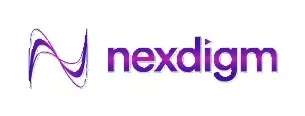- within Government and Public Sector topic(s)
- with readers working within the Oil & Gas industries
- within Government, Public Sector, Employment and HR and International Law topic(s)
In a rapidly shifting global supply landscape, category managers carry the heavy responsibility of balancing costs, managing supplier risks, advancing sustainability, and meeting stakeholder expectations, often all at once. Yet, while they are expected to deliver strategic value, their days are frequently consumed by operational tasks: chasing supplier data, reconciling price fluctuations, or navigating compliance hurdles.
This is where procurement support teams come in: the often-unsung enablers of strategic category management. When designed and deployed effectively, procurement support functions can transform the operating pattern of category managers, freeing them from tactical overload and enabling data-backed, forward-looking decisions.
Procurement today: Complexity meets constraint
Insights gathered from procurement operations across diverse geographies, including the USA, India, Switzerland, and others, reveal a consistent pattern: category managers are stretched thin. While procurement's role has evolved to be more strategic and collaborative, the underlying processes often remain fragmented or manually intensive.
Organisations today grapple with numerous challenges, such as ongoing supply chain disruptions, inconsistent RFx processes, a lack of consolidated spend data, weak supplier relationship governance, and growing sustainability pressures with unclear roadmaps. These challenges not only weigh down procurement's potential but also highlight a critical reality: category managers cannot and should not do it all alone.
Procurement support: Refocusing the strategic lens
Procurement support functions, often structured as centralised centers of excellence or embedded analytical pods, can be a force multiplier for category managers when aligned strategically. Their role is to absorb the non-strategic yet essential operational workload that often distracts category leaders from driving value.
One of the most significant areas of support lies in RFx management. Running RFPs, RFQs, and e-auctions can be logistically demanding and inconsistent across teams. Procurement support teams can streamline this by standardising templates, managing supplier communications, tracking timelines, and operating e-sourcing tools. This structured approach allows category managers to invest their time in evaluating supplier outcomes rather than organising document flows.
Another area where procurement support plays a crucial role is in spend analysis and opportunity identification. With access to robust spend cubes and dashboards, support teams can conduct quarterly spend reviews, identify tail-spend consolidation opportunities, and flag non-compliance with preferred supplier frameworks. These insights allow category managers to shift from reactive problem-solving to proactive pipeline planning.
Supplier management is also enhanced through procurement support. When supplier intelligence, including risk scores, performance history, and QBR preparation, is centralised and standardised, it fosters consistency across category teams. This ensures that supplier relationship strategies are informed by actual performance data rather than anecdotal feedback.
In the realm of sustainability, procurement support can interpret ESG goals by mapping category-specific sustainability benchmarks, tracking carbon impacts, and integrating ESG criteria into sourcing processes. For category managers, this turns high-level sustainability targets into actionable sourcing levers — not just check-the-box compliance measures.
Operating model matters: Hub-and-spoke for strategic enablement
Too often, procurement support is structured as an afterthought — a scattered group of analysts without strategic linkage to the broader procurement goals. A more effective approach is to adopt a hub-and-spoke model. In this model, the "hub" consists of a centralised support function responsible for analytics, RFx execution, data integrity, and supplier risk scanning. The "spokes" are the category managers who lead supplier relationships, category strategy, and stakeholder alignment.
This model offers scalability as a centralised team can serve multiple categories and regions. It ensures consistency through standard templates and sourcing frameworks. Most importantly, it accelerates speed by enabling parallel execution of tactical tasks, which shortens sourcing cycles and improves service levels to internal stakeholders.
Digital tools as enablers — Not distractions
Digital procurement platforms, from spend analytics dashboards to contract lifecycle management systems, are only as powerful as the people using them. In many cases, category managers don't have the time to maximise these tools. Procurement support teams can step in to own tool administration, build dashboards, train users, and ensure standardised use across the organisation. This way, technology becomes a decision enabler, not another source of administrative overhead.
Measuring what matters: Procurement support KPIs
It's not enough to build a procurement support function — its effectiveness must be measurable. Organisations typically track metrics such as the percentage of sourcing events managed by support teams, sourcing cycle time reduction, stakeholder satisfaction scores, and the proportion of opportunities identified versus acted upon. Other important indicators include preferred supplier compliance and the percentage of spend under active procurement management.
These KPIs not only demonstrate the tactical efficiency gained through procurement support but also reflect the increased strategic capacity of category managers. When tracked consistently, they help quantify the return on investment of the support model.
Final thoughts: Procurement's multiplier effect
Today's category managers are under more pressure than ever to deliver savings, ensure supply continuity, and contribute to broader corporate priorities like sustainability and digital transformation. Expecting them to do this alone is neither realistic nor sustainable. Strategic procurement support is no longer a nice-to-have but a critical enabler of modern procurement excellence.
The organisations that recognise and invest in this model will be the ones that deliver consistent value in a world defined by volatility, complexity, and rising expectations. So, the question isn't whether you need procurement support. It's this: Can your category managers afford not to have it?
Originally published by Manufacturing Today.
The content of this article is intended to provide a general guide to the subject matter. Specialist advice should be sought about your specific circumstances.
[View Source]

